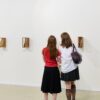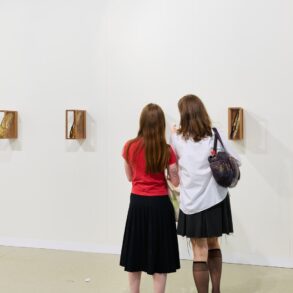
An exhibit at the National Museum of Women in the Arts features an array of artists sharing their views of an increasingly complex world.
This article is part of our Museums special section about how institutions are striving to offer their visitors more to see, do and feel.
Late one night a few years ago, the multidisciplinary artist Amanda Phingbodhipakkiya was finishing up a sprawling public installation she had created in Manhattan’s Chelsea neighborhood. A couple walked by, she recalled, and, clearly impressed, remarked to Phingbodhipakkiya: “We love this. Please tell the artist his work is amazing. You must feel so lucky just to get to clean this space.”
Shocked by their blatant sexism and racism, Phingbodhipakkiya found herself speechless. “This is the reality for many of us,” she said in a recent interview, adding that although she is hopeful that things are shifting for women in the arts, “barriers still exist.”
Only 11 women were among the 100 top-selling artists at auction globally in 2023, according to the 2024 Artnet Intelligence Report. And between 2008 and 2020, only about 11 percent of acquisitions and 15 percent of exhibitions at museums in the United States featured the work of women (those exhibitions were all women or largely by women), according to the most recent Burns Halperin Report, which investigated representation in American museums.
The situation is starting to improve, as demonstrated with recent exhibitions by the German painter, printmaker and sculptor Käthe Kollwitz at MoMA in New York, the Ukrainian American Abstract Expressionist painter Janet Sobel at the city’s Ukrainian Museum, and the painter Christina Ramberg at the Art Institute of Chicago. But there is still a long way to go toward gender equity in art museums.
Equity is essential, said Katy Hessel, an art historian and the author of the book, “The Story of Art Without Men,” because “if we aren’t seeing artwork by a wide range of people, curated by a wide range of people, then we are not seeing art — or society, culture and history — as a whole.”
This post was originally published on this site be sure to check out more of their content







